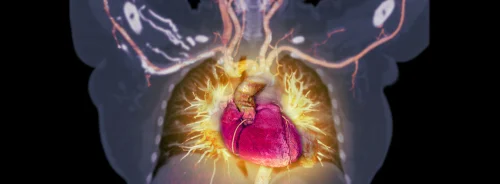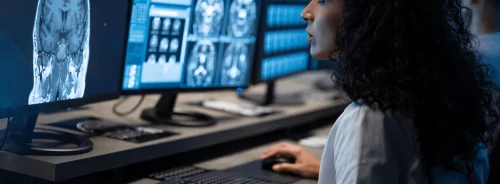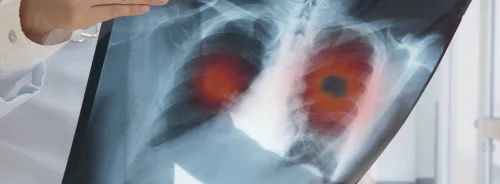HealthManagement, Volume 12 - Issue 1, 2012
Radiology was born in December 1895. Not much later, doctors were reading and reporting x-ray images across the world. More than a century later, imaging technology has made quantum leaps forward, but reporting has changed very little. It has been proven time and again that radiologists as well as referring clinicians favour a shift from free text to structured reporting (SR), and yet little of all this appears to seep through in daily practice. Are we really serious about SR, and what is the likelihood that we will use it regularly in our lifetime?
Early Surveys
What referring clinicians expect from us, radiologists, surpassed speculation and personal convictions almost a quarter of a century ago. In 1988, a survey by Lafortune and collaborators in Montreal showed that the principal characteristics considered useful by clinicians were clarity, brevity, clinical correlation and, especially among general practioners, advice on planning of future investigations [1]. That same year, in a survey by Clinger’s team in Tucson, Arizona, the overall quality of the reports issued by their department was rated 8/10. Fifty-nine percent of the responders thought the reports were usually clear, 40 percent that they were occasionally confusing, and 49 percent stated that they sometimes did not sufficiently address the clinical questions [2].
Three years later, Sandeep Naik and collaborators at the University of Toronto also included radiologists in their study, and compared their preferences with those of the referring physicians. In the same paper, they rekindled the radiological community’s interest in ‘itemised’ (i.e. structured) reporting. And indeed, SR was favoured by an overwhelming majority of the clinicians (86 percent) and a convincing majority (64 percent) of the radiologists in their study [3].
Quality, Structure and Length
The primary focus of our own research at the University of Antwerp was not to determine physicians’ preferences but to determine the quality and structure of radiology reports. In 2002 - 2003, we performed a small scale audit of reports at Antwerp University Hospital. Reports were rated by an experienced radiologist, who is also an editor of medical magazines according to five criteria: clarity, brevity, directness, language and clinical utility. The overall quality of the reports was found to be sufficient but there was room for improvement. Staff radiologists did not make better reports than residents-in-training [4].
In a larger, bi-national study we concentrated on the functional parts of abdominal CT reports, their respective length, and the total length of the reports [5]. At each of eight collaborating centres in the Netherlands and Flanders, the Dutch speaking part of Belgium, 100 consecutive abdominal CT reports were collected. After exclusion of non-standard reports, 525 were maintained for further study. The length of the reports and of their functional parts was determined using Microsoft Word's character and word counting features. Numerical results were ordered according to the country, the reporting radiologist (staff or resident) and the nature of the medical centre (university or community), and subjected to statistical analysis.
The reports showed a wide variety in general layout, style, length and content. Reports made by residents were longer than those made by staff radiologists. In Flanders, reports were longer than in the Netherlands. There was also a trend towards longer reports in academic centres than in community hospitals.
None of the reports examined were made according to a pre-structured model. As for the ‘natural’ or ‘spontaneous’ structure of these free text reports, 71 (13.5 percent) did not have an impression or conclusion but that number was very variable depending on the institution. Like many other characteristics of the report, whether or not there was a conclusion seemed to depend largely on local tradition. As Hall points out, impressions (i.e. conclusions) are an excellent gauge of the common sense and clinical judgment of the radiologist. Separating the important from the incidental often takes time and thought [6]. National and international guidelines encourage consistent ordering of a report, including adding a conclusion [7 - 10].
In a comparable study in Finland, Heikkinen et al obtained very similar results [11]. Sobel et al (1996) systematically characterised the information provided by chest radiography reports of 822 elderly people in 297 acute-care hospitals. They found wide variation in the content of chest radiography reports, extensive variation in terms used to identify the presence or absence of abnormal findings, and a large degree of uncertainty in what was found [12]. In 2010, Pool et al reviewed 25 published papers and four guidelines and found little consistency in the language used to describe imaging findings, and much variation in diagnostic certainty [13].
In short, if there is an optimal way of reporting imaging studies, no-one seems to have found it yet.
Opinions and Expectations Measured
To examine the perceived preference of radiologists and clinicians for structured, itemised reports we set up two largescale, bi-national internet surveys at the University of Antwerp: COVER (Clinicians' Opinions, Views and Expectations concerning the radiology Report) and ROVER (Radiologists' Opinions, Views and Expectations concerning the radiology Report) [14]. Participants were asked to rate 46 statements on a Likert scale (entirely agree, rather agree, neutral, rather disagree, entirely disagree). Most of the statements in both surveys were paired, which would allow close comparison between the ideas expressed by radiologists and by referring clinicians. With 873 respondents, COVER and ROVER are to our knowledge the largest surveys on the report that have been reported to date.
Most clinicians (71.8 percent) declared themselves satisfied with the radiology report and a large majority of them (87.0 percent) considered it an indispensable tool. Most accepted that the radiologist is the best person to interpret the images. Nearly all referring clinicians and radiologists (97.4 percent and 98.5 percent respectively) were convinced of the need to provide adequate clinical information and a clear clinical question when requesting imaging studies.
As for the structure of the report, brief reports of complex examinations such as abdominal ultrasound were rejected by 70.9 percent of the clinicians. Itemised reporting of complex examinations was preferred by both the clinicians (84.5 percent) and the radiologists (67.7 percent), almost exactly the same figures as Naik’s. Conversely, the suggestion that a radiology report should consist of prose was rejected by 56.0 percent of the referring clinicians and 72.9 percent of the radiologists.
Almost four out of ten radiologists in ROVER were convinced that their own reports were better than their colleagues’. This emphasises how deeply a radiologist's reporting style is rooted in personal experience and convictions. It may also partly explain why it is so difficult to streamline and standardise the reporting process.
How do the results of other recent studies compare to ours? In a survey by Grieve et al, GPs favoured detailed reports in a tabulated (structured) format for ultrasound examinations [15]. In a survey among specialists, the same team with Plumb as first author found a preference for more detailed reports with a radiologists’ comment rather than for briefer reports, even for normal examinations. Tabular reports were preferred to prose (free text reports), the combination of a detailed report presented in a tabular format accompanied by a radiologist’s comment being the most preferred style [16].
In research that has not yet been published, our team has tried to determine which other factors are involved in the slow implementation of structured reporting. Being compelled to report within a rigid frame without any room for nuance was judged unacceptable by an international focus group of radiology professionals. Personal convictions on how to report best appeared to have high emotional value. However, it was felt that if radiologists would not actively participate in the development of SR, other healthcare stakeholders would impose it anyhow [17].
There and Back Again?
The theoretical pros and cons of SR have been discussed extensively [18]. As for practice, a comparative study has shown that the output to the clinician is okay: structured reports are as efficient as free text reports in conveying the message [19]. The input, however, is problematic: another comparative study has shown that structured reports risk being less complete and accurate, both to a degree that could impair patient care. In the same study, participating radiologists thought SR was quite cumbersome, but they still considered it a good idea! [20]
In all surveys, referring clinicians and (to a lesser degree) radiologists prefer SR to free text reporting; but in spite of this, in most centres SR is limited to a few very specific examinations, if any. Worse: in centres such as Toronto General Hospital and Midway Medical Center, Los Angeles, where SR was introduced by enthusiastic supporters and used for a number of years to most doctors' satisfaction, its use was discontinued more or less when these supporters left the institution [21, 22].
That is not a coincidence. There is little doubt that referring clinicians are dreaming of more accessible reports of specific complex examinations. One even wonders why they still accept follow-up reports of oncology patients, or any report containing measurements, that is not made according to standard protocols. The situation of the radiologists who are supposed to produce them, however, is completely different.
SR Received Positively Despite Limited Adoption
Despite the support of societies such as the RSNA, SR is very much the domain of a handful of very enthusiastic radiologists, as can easily be deduced from the names of speakers on the subject at international events. But even some of these seem to take a different stance today. According to one of these experts, Chris Sistrom, Professor of Radiology at University of Florida College of Medicine, better speech-to-text adoption is the main reason. Early speech recognition systems were not very good, so radiologists tried to gain back efficiency by switching to structured reporting. Nowadays, recognition is much better and radiologists have learned to dictate in ways that enhance recognition, so we are moving back to simple dictation [23]. In my own contacts with colleagues in several institutions in Europe, I experienced a lot of positive interest in SR, but at the same time clear skepticism as to its implementation. And indeed, if reporting a CT scan of the lumbar spine or an MR scan of the liver turns five line reports into a multimedia experience of mouse clicks and pop-up menus, few will welcome the transition.
Reality therefore compels us to critically review the surveys that have convinced us of the need to switch to SR, including our own. To my knowledge, only in Naik’s pivotal and welldesigned survey both groups had some experience with SR, and only in ultrasonography [24]. Since their experience with SR was limited or non-existent, responders in other surveys will have based their answers on theoretical considerations only. And convictions are fine, but they may turn into illusions if not met by anything useful within a reasonable timeframe.
Conclusions
No-one can deny that gigantic steps have been taken to make SR a feasible and even attractive alternative to free text reporting. The value of Integrating the Healthcare Enterprise (IHE), in which radiologists closely cooperate with the industry [25] cannot be overestimated. The further completion of Radlex [26], the development of more than 140 RSNA templates for structured reporting [27], of DICOM Supplement 155, the RadLex Playbook [28], etc. each represent major leaps forward on the long and hazardous road to SR. All those engaged in these projects deserve our gratitude and high esteem, for theirs is a highly frustrating but grandiose mission.
Hopes are also that one day technology will provide a solution. ‘Talking templates’ have been proposed to overcome the distraction caused by mouse-and-keyboard operation [29]. A few providers are trying to develop systems that automatically transform free text into a structured report. I too hope that one day someone will come up with iStructuring, the ultimate device we were all waiting for. And maybe turn illusion into illumination.






